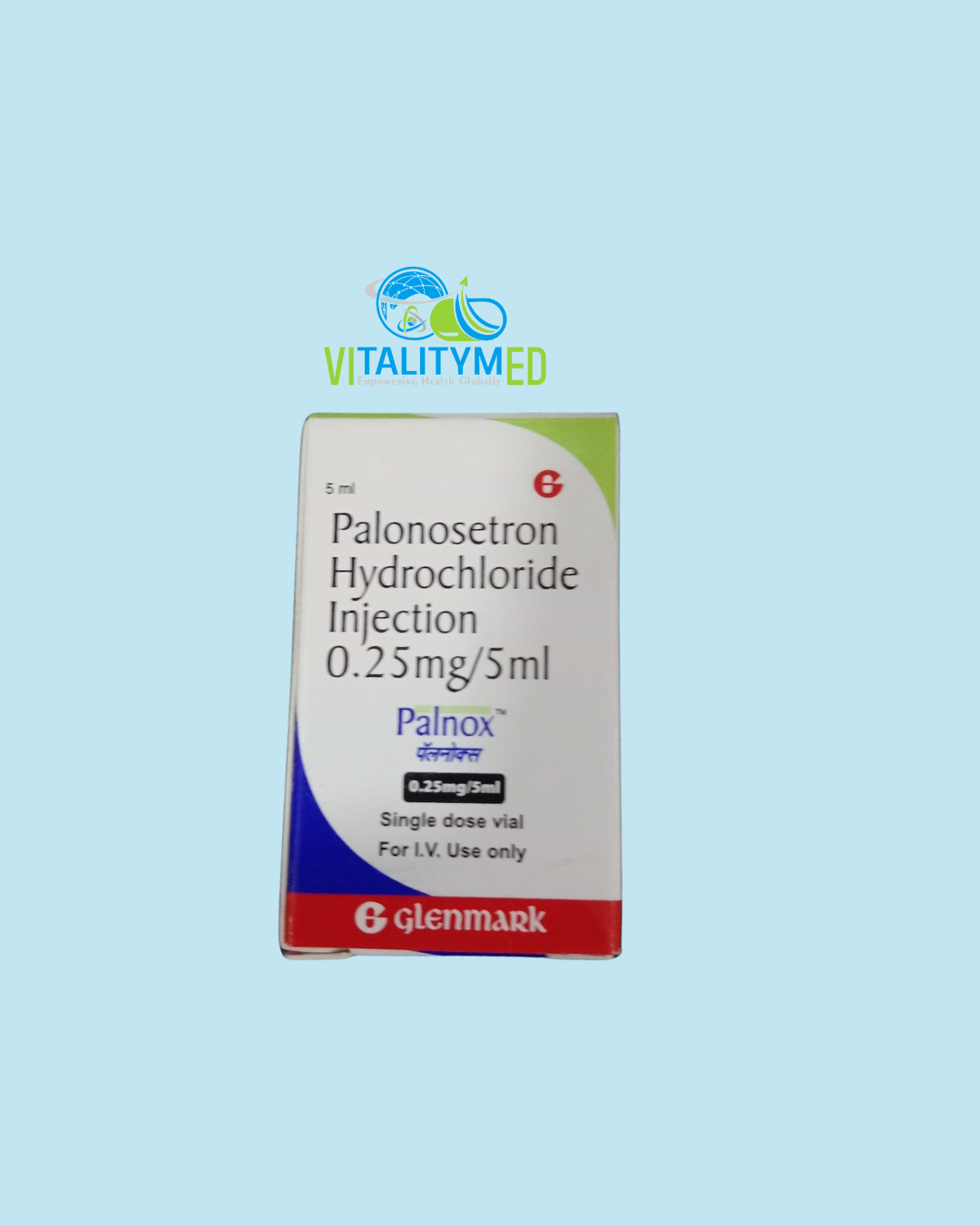Palnox 0.25 mg/5 ml is a formulation containing Palonosetron Hydrochloride, a highly selective serotonin (5-HT3) receptor antagonist, primarily indicated for the prevention of chemotherapy-induced nausea and vomiting (CINV). It represents a newer generation of 5-HT3 antagonists, with unique pharmacologic properties that distinguish it from earlier agents like ondansetron or granisetron.
Palnox is supplied as an intravenous solution, typically administered as a single IV injection prior to chemotherapy, under the supervision of a healthcare professional.
Mechanism of Action
Palonosetron works by blocking serotonin (5-hydroxytryptamine, 5-HT) type 3 receptors located:
-
on vagal nerve terminals in the gastrointestinal tract, and
-
centrally in the chemoreceptor trigger zone (CTZ) of the area postrema in the brainstem.
These receptors play a crucial role in initiating the vomiting reflex in response to emetogenic chemotherapy. By antagonising these receptors, palonosetron prevents both acute (within 24 hours) and, more uniquely, delayed (24–72 hours) chemotherapy-induced nausea and vomiting.
Unlike first-generation 5-HT3 antagonists, Palonosetron has:
-
A higher receptor binding affinity (about 100-fold greater than ondansetron or granisetron).
-
A prolonged half-life (~40 hours), allowing extended protection with a single dose.
Uses
Palnox (Palonosetron HCl) 0.25 mg/5 ml is indicated for:
Prevention of Acute and Delayed Nausea and Vomiting:
-
Associated with initial and repeat courses of moderately emetogenic chemotherapy (MEC), such as carboplatin or doxorubicin.
-
In combination with other agents (like dexamethasone or NK1 receptor antagonists) for highly emetogenic chemotherapy (HEC) regimens, such as cisplatin-based therapy.
Prevention of Postoperative Nausea and Vomiting (PONV):
-
Though this indication is more commonly covered by lower doses (oral or specific formulations), palonosetron can be considered when prolonged action is desired.
Adverse Effects
Palonosetron is generally well tolerated. However, like all 5-HT3 antagonists, it has potential adverse effects that require clinical attention.
Common adverse effects
-
Headache (most frequently reported)
-
Constipation
-
Dizziness
-
-







Reviews
There are no reviews yet.